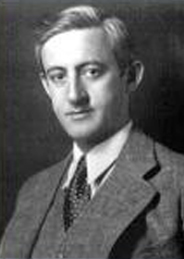 1892–1989
1892–1989
"Life in a sterile environment - whether physical, chemical, biological or psychological - is both improbable and undesirable."
—Abel Wolman
Decades before the nation's environmental movement, Abel Wolman combined engineering with public health and hygiene into the field that came to be known as sanitary engineering. He developed globally implemented procedures for water and sewage chlorination and disinfection, and influenced federal policy concerning water pollution control and management.
Abel Wolman was born in Baltimore, Maryland in 1892, and for the next 96 years remained connected to his city of birth. Abel was one of six children of Polish-Jewish immigrant parents. Though he hoped to be a physician, his parents encouraged him to study engineering. In 1915 Wolman was the fourth person to receive a BS degree from The Johns Hopkins University's new School of Engineering. While a student at Hopkins, Wolman participated in a pollution study of the Potomac River for the U.S. Public Health Service. This led after graduation to an engineering position with the Maryland State Health Department.
In 1918 Wolman teamed up with classmate and chemist Linn Enslow and began experimenting with the application of chlorine to water as a means to eliminate pathogens. Although scientists had experimented with the hazardous chemical as far back as the 1880s, by 1923 Wolman and Enslow determined the absorption rate of chlorine in water and then devised a standard formula permitting the proper amount of the chemical based on a variety of factors including bacterial content, acidity and desired taste and purity. Wolman applied the technique to Maryland drinking water, and by 1930, typhoid cases alone had dropped 92 percent. The success of the chlorination technique catapulted the young engineer's career, and by his mid-thirties Wolman simultaneously chaired the state Planning Commission in charge of capital improvements, served both the Federal Emergency Administration and the Public Works Administration as chief engineer in Delaware and Maryland, and edited the Journal of the American Water Works Association and the American Journal of Public Health. His official positions involved him in projects as diverse as the Gunpowder-Montebello water tunnel, the Montebello Filtration Plant, the Friendship Airport, the Frederick's sewage treatment system, and the Prettyboy and Liberty reservoirs. In 1937 Wolman joined the faculty at Johns Hopkins and eventually chaired both the Engineering and Public Health Departments.
During his academic career one of his goals was to promote the cross-fertilization of the two academic disciplines, and he eventually established the Department of Sanitary Engineering. For the remainder of his career Wolman remained a consultant to the U.S. Public Health Service and to over 50 foreign governments. In 1946 Wolman served as a delegate to the founding conference of the World Health Organization (WHO) and argued for the inclusion of environmental health in the organization's constitution. He was one of the first engineers interested in the public health implications of nuclear power, and during the New York City water shortages in 1951 and 1965 he helped alleviate the crises by means of purified water from the Hudson River. During the twilight of his career, Wolman encouraged tougher standards on unproven synthetic organic chemicals. Shifting from his earlier belief that chemicals be permissible in water supplies until scientific evidence proved them harmful, Wolman bluntly stated at a variety of conferences," Let's stop demanding proof. We can't wait." A plaque on the wall at the Public Works Museum in Baltimore simply states, "Dr. Abel Wolman, Friend of the Thirsty."

